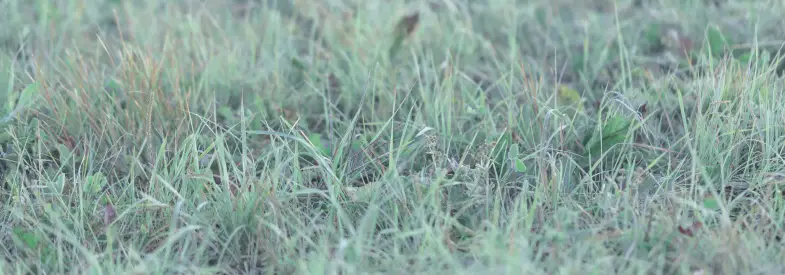Summer is fast approaching, and lawn owners know that summer is the time to go on intensive lawn care routines. This, of course, is because summer comes with its fair share of lawn troubles.
Grubs for one are usually significantly higher during summer. And if they aren’t tackled on time, they could leave your lawn looking like a blast from the past. Knowing how and when to go for grub control could save you and your lawn a great deal of time and resources.
Life cycle Of Grub Worms
Female beetles normally lay their eggs during summer. The grubs go on to hatch around late summer and feed on turf roots from this time till winter. During winter, they burrow deep into the soil to overcome the harsh weather, and when spring arrives, they go on to begin feeding again.
Around late spring and summer, they pupate and eventually transition to become full adults in midsummer.
Do You Have a Grub Problem?
Grubs on your perfectly manicured lawn or garden can be a scare. But really, except you notice them in their numbers, there shouldn’t be a cause for alarm. Having a grub problem is different from having grubs in your lawn. The difference is in the number.
To find out if you have a grub problem, inspect a square foot of your lawn during summer, go as far as two to four inches deep. If you have grubs in your lawn, you’ll see them there feeding.
Although you only need to go into action if you notice ten or more grubs per square foot of inspection, anything less can be excused. A healthy turf that is properly taken care of can support a grub population of five or more grubs per square foot without any visible damage on the lawn.
When Is the Best Time to Apply Grub Control?
Although, you should only start treating your lawn after you discover you have a grub problem. You don’t have to wait till that time to take precautions.
As you already know, an ounce of prevention is worth a pound of cure. It’s usually better to enter into fall without fear or worries about grub infestation.
Preventative measures are usually best applied during spring and summer. Spring because, at this time, overwintering grubs are just beginning to come out. Summer is also a good time to go for grub control because what you’ll have to deal with are newly hatched grubs and not mature adults.
During spring, when the weather is a little warm, you can apply chlorantraniliprole products. While in summer, you can use thiamethoxam and imidacloprid to attack emerging grubs.
Is It Too Late To Apply Grub Control?
Preventative measures work best before the fall season. But if perhaps fall meets you unprepared, you could still take your bet at saving your lawn.
For lawn owners, Imidacloprid is one of the most common grub control treatments. Usually, products with Imidacloprid are usually most effective when applied during summer, probably at the end of July or at most early August.
However, there are other newly emerging products that could control the damage of late application. These products still work just fine even right into September.
Even if you couldn’t take your shot at grub preventative treatments, you could always go for curative control.
Grub Treatments
#1. Preventative Grub Treatments
These products don’t necessarily control grubs present. They only work to prevent you from having future grub problems. If you noticed grubs on your lawn the previous spring or fall, then you might want to consider applying preventative insecticide. Doing this will give you a more dense lawn that can resist grub infestation.
However, if you have treated your lawn consistently and you discover that the grubs have been taken care of in your lawn and that your neighbor’s lawn is free from grubs as well, you should stop treatment. Continued treatment is really unnecessary if grubs are not present.
As expected, preventative measures are more effective than curative measures. Products with imidacloprid, thiamethoxam, chlorantraniliprole, or clothianidin are preventative products, and will only work on newly hatched grubs or small grubs present in July.
Applying preventative products during June or July will reduce grubs by as much as 75%-100%, especially if they are properly watered down immediately about ½ “-1”.
#2. Natural Grub Treatments
Most preventative measures against grubs come in the form of insecticides. But if you’re one of those looking for a more natural way to prevent grub attack, you could go for a treatment of nematodes.
This should be carried out in September. Although this method also records a high success rate, it requires extra attention for it to work.
Nematodes should be applied to moist or wet soils and irrigated immediately. Also, it should be applied when the sun isn’t out as the rays from the soil could kill them before they begin to work.
How successful this approach will be will depend not just on having a moist soil, but on your ability to get the nematodes into the soil as well. If you can successfully do this, then the nematodes can get to where the grubs are found feeding.
#3. Curative Grub Treatments
The two chemicals usually considered as curative treatments for grubs are carbaryl and trichlorfon. They work to kill grubs at all life stages. These two products are probably your best bet if you have a serious grub problem during fall and spring.
When applied in early fall (any time around September), you can be sure that at least grub mortality will rise by as much as 20%-80%. If you wait till late fall (anytime around late October), you might only be able to get rid of about 20%-50% of the grubs present in the lawn…
Be patient after applying curative treatments. Most times, the time span indicated on the manufacturers’ label doesn’t always apply. Times, it could take as much as three to four weeks to begin noticing results.
Finally, remember that watering these insecticides immediately they are applied, is germane to getting positive results.
#4. Pesticide Treatment
You could also apply pesticides to your lawn to take care of your grub problem. Make sure you do this on a day when the rain wouldn’t make your efforts futile. And of course, don’t forget to fully kit up. Safety is very important, even while doing these things.
Also, remember to water in the pesticide with about ½” of water. In doing this, ensure that water doesn’t drain from your lawn into waterways or gutters. And as much as you can, keep your children and pets away from the lawn, until everywhere is all dried up.
#5. Cultural Controls
Most grubs thrive in moist soils. If you have a grub problem, you could work at keeping your lawn dry during summer. This will dry out and most likely kill the eggs that are yet to hatch. However, this might lead to your grass turning brown, which is something most people don’t like.
Conclusion
Back to your question, “Is it too late to apply grub control?” No. Summer is just barely coming through, and so it’s best to start planning for it. Again remember, in lawn maintenance, an ounce of prevention is a thousand times worth a pound of cure.

